Table of Contents
Archer TBE6500U User Guide
About This Guide
This guide is a complement to Quick Installation Guide. The Quick Installation Guide instructs you on quick installation, and this guide provides the product overview and detailed instructions for each steps.
When using this guide, please notice that features available of the adapter may vary by model and software version. It may also vary by region or ISP. All images, steps, and descriptions in this guide are only examples and may not reflect your actual experience.
Conventions
In this guide the following conventions are used:
|
Convention |
Description |
|---|---|
|
Underline |
Underlined words or phrases are hyperlinks. You can click to redirect to a website or a specific section. |
|
Bold |
Contents to be emphasized and texts on the web page are in bold, including the menus, items, buttons and so on. |
|
> |
The menu structures to show the path to load the corresponding page. For example, Settings > System Tools > Firmware Upgrade means the Firmware Upgrade page is under the System Tools menu that is located in the Settings tab. |
|
Note: |
Ignoring this type of note might result in a malfunction or damage to the device. |
|
Tip: |
Indicates important information that helps you make better use of your device. |
Get to Know About Your Adapter
This chapter introduces what the adapter can do and shows its appearance.
This chapter contains the following sections:
- Product Overview
- LED Status
Product Overview
Archer TBE6500U redefines Wi-Fi 7: Tri-band ensures smooth connections, MLO enables seamless switching between bands for uninterrupted speed, 4096-QAM delivers 20% more data per signal, and multi-RUs let your whole family stream, game, and download simultaneously—all without lag.**
- 6.5 Gbps Tri-Band Wi-Fi 7 - Ultra-fast speeds up to 2882 Mbps (6 GHz) + 2882 Mbps (5 GHz) + 688 Mbps (2.4 GHz).*
- Multi-Link Operation (MLO) - Enable devices to use multi-link seamless dynamic switching to achieve lower latency, lag-free gaming and streaming.**
- Archer TBE6500U - Connect to your WiFi from wherever in your home with high-performance antennas and Beamforming.
LED Status
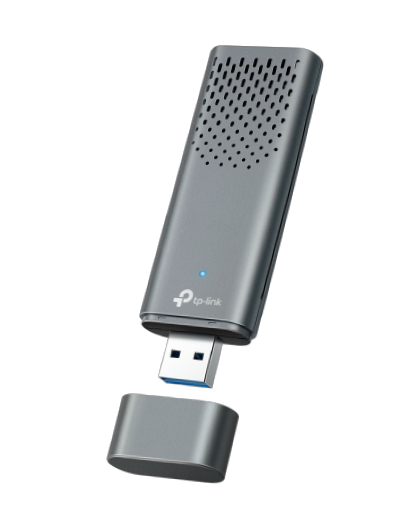
You can check the adapter’s working status by following the LED explanation table.
| Status | Indication |
|---|---|
| On | The driver has been installed successfully. |
| Off | The driver is not installed. The adapter is not detected. |
Tips: If the LED is off, try these troubleshooting tips:
- Check if the adapter is recognized and enabled or not. Refer to Appendix: Troubleshooting for detailed instructions.
- Remove and reinsert the adapter.
- Reinstall the driver, if necessary.
Use the Adapter
Before You Start:
a. Make sure your Router or Access Point supports the Wi-Fi 7 standard.
b. Ensure that your operating system meets the compatibility requirements:
- Supported operating system: Windows 10/11
- Supported MLO operating system: Windows 11 (Version 24H2 and later)
1. Connect to a Computer
Insert the adapter into a USB port on your computer directly.
Note: It is recommended to connect the adapter to a USB 3.0 ( ) port.
) port.
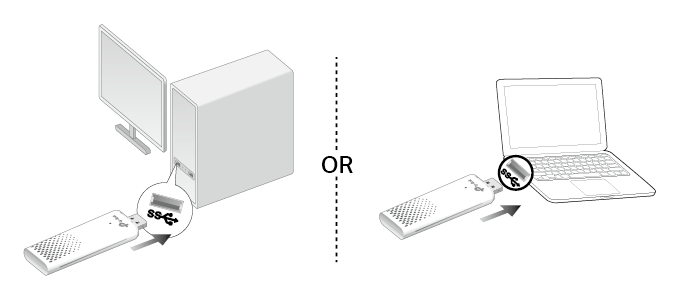
* The image is for demonstration only.
2. Install Driver
a. Go to My Computer or This PC.
b. Double click the CD Drive then run SetupInstall.exe to install the driver.

Note:
If you cannot find the setup program, please download the driver at www.tp-link.com/support.
If an unknown publisher message pops up, select Yes to continue.
If Windows User Account Control requires admin credentials, type user name and password of your Windows administrator account.
3. Join a Wireless Network
a. You can join a wireless network via Windows built-in wireless utility. Follow the instructions below to use your computer system’s built-in wireless utility:
b. Click the Network icon on the taskbar. The icon might look like one of these: . Select the Wi-Fi network you want to join, and click Connect. Enter the network password when prompted.
. Select the Wi-Fi network you want to join, and click Connect. Enter the network password when prompted.
4. Uninstall Driver
The software uninstallation steps vary a bit from different systems. Here we take the instructions for Windows 10 as an example.
Go to Contol Pannel > Programs, click Uninstall a program, then double-click TP-Link Wi-Fi 7 Wireless USB Adapter, then follow the on-screen instructions to complete the uninstallation.
Troubleshooting
Q1: What should I do if the adapter is not detected?
- Make sure the adapter is securely connected to the computer.
- Make sure you meet the minimum system requirements for the adapter and that the latest Windows and system updates are installed on your computer.
- Make sure you use the latest driver for your specific adapter. The latest drivers can be found at https://www.tp-link.com/download-center.
- Try a different USB port on the computer.
- Try restarting the computer or try using the adapter on a different computer.
Q2: How to check if I have installed the driver for my adapter successfully or not?
1. On your computer, please right click Computer icon and go to Manage;
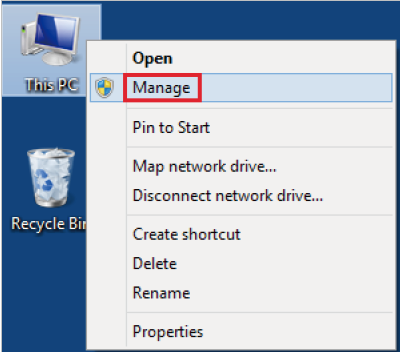
2. Open the Device Manager and go to Network adapters, and then find the corresponding TP-Link adapter, right click it and then go to Properties;
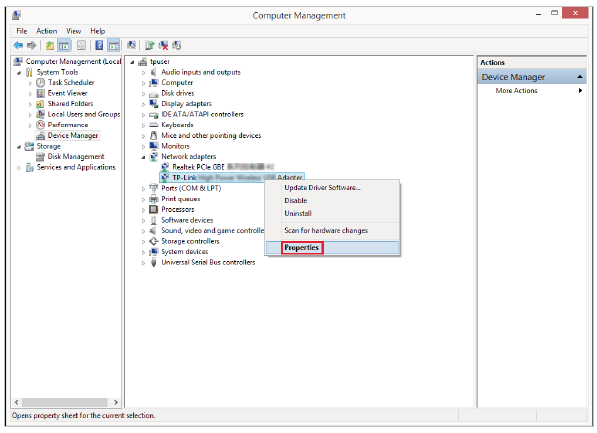
3. If you can see “This device is working properly.” in the red box, you have already installed the driver successfully.
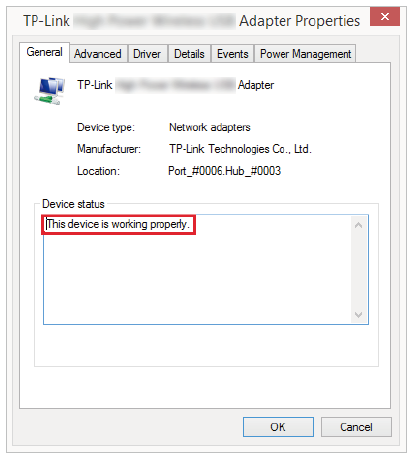
Q3: What should I do if can’t connect to the Wi-Fi after installing the driver?
- Refer to Q2 to check if you have installed the driver for your adapter successfully .
- Make sure the adapter is securely connected to the computer.
- Disable the antivirus software and firewall, then try again.
- Try a different USB port on the computer.
- Restart your computer and try again.
- Re-install the driver and try again.
Q4: How to find the hardware version of the adapter?
- The hardware version is printed on the product label on the package or the adapter. There is a character string “Ver:X.Y” (for example, Ver:2.0) in the Serial Number field, and the number X is the hardware version of the adapter.

- Visit https://www.tp-link.com/faq-46.html and follow the second method to find the hardware version of the adapter.
Q5: How do I update my operating system?
- Refer to the official website to download Win 11: https://www.microsoft.com/software-download/windows11/
For more detailed instructions:
- Can’t find or join the wireless networks: https://www.tp-link.com/faq-2253.html
- Can’t install the driver: https://www.tp-link.com/faq-2252.html
More Info
The latest software, management app and utility are available from Download Center at https://www.tp-link.com/support/.
The Quick Installation Guide can be found where you find this guide or inside the package of the extender.
Operating temperature, storage temperature, and other specifications can be found on the product page at https://www.tp-link.com.
Our Technical Support contact information can be found at the Contact Technical Support page at https://www.tp-link.com/support.
Disclaimer
*Maximum wireless signal rates are the physical rates derived from IEEE Standard 802.11 specifications. Actual wireless data throughput and wireless coverage, and number of connected devices are not guaranteed and will vary as a result of network conditions, AP limitations, and environmental factors, including building materials, obstacles, volume and density of traffic, and AP location.
**Use of Wi-Fi 7(802.11be), Wi-Fi 6(802.11ax), Wi-Fi 6E(802.11ax), and other features including MLO, 160 MHZ Bandwidth, 4K-QAM, Multi-RUs, OFDMA, MU-MIMO, and BSS Color requires the AP and PC OS also to support the corresponding features. The MLO is still being developed on some Wi-Fi 7 models and will be supported in subsequent driver updates.
†Use of WPA3 requires APs also to support the corresponding feature.
‡The number is based on testing conducted by the USB-IF and your computers are required to also support USB 3.0.
△To ensure compatibility, you may need to update the adapter’s drivers after an OS update, you can find our latest drivers in the download center at tp-link.com/en/download-center.
§Archer TBE6500U supports 6GHz on Windows 10 22H2 and later versions, though functionality and performance may be limited.
Actual network speed may be limited by the rate of the product’s USB port, PCI Express Interface, Ethernet WAN or LAN port, the rate supported by the network cable, internet service provider factors, and other environmental conditions.
Authentication
FCC compliance information statement

Product Name: BE6500 Tri-Band Wi-Fi 7 Wireless USB Adapter
Model Number: Archer TBE6500U
Responsible Party:
TP-Link Systems Inc.
Address: 10 Mauchly, Irvine, CA 92618
Website: http://www.tp-link.com/us/
Tel: +1 626 333 0234
Fax: +1 909 527 6804
E-mail: sales.usa@tp-link.com
This equipment has been tested and found to comply with the limits for a Class B digital device, pursuant to part 15 of the FCC Rules. These limits are designed to provide reasonable protection against harmful interference in a residential installation. This equipment generates, uses and can radiate radio frequency energy and, if not installed and used in accordance with the instructions, may cause harmful interference to radio communications. However, there is no guarantee that interference will not occur in a particular installation. If this equipment does cause harmful interference to radio or television reception, which can be determined by turning the equipment off and on, the user is encouraged to try to correct the interference by one or more of the following measures:
Increase the separation between the equipment and receiver.
Connect the equipment into an outlet on a circuit different from that to which the receiver is connected.
Consult the dealer or an experienced radio/ TV technician for help.
This device complies with part 15 of the FCC Rules. Operation is subject to the following two conditions:
This device may not cause harmful interference.
This device must accept any interference received, including interference that may cause undesired operation.
Any changes or modifications not expressly approved by the party responsible for compliance could void the user’s authority to operate the equipment.
Note: The manufacturer is not responsible for any radio or TV interference caused by unauthorized modifications to this equipment. Such modifications could void the user’s authority to operate the equipment.
FCC RF Radiation Exposure StatementThis equipment complies with FCC radiation exposure limits set forth for an uncontrolled environment. End users must follow the specific operating instructions for satisfying RF exposure compliance. This transmitter must not be co-located or operating in conjunction with any other antenna or transmitter. This equipment has been SAR-evaluated for use in hand. SAR measurements are based on a 5mm spacing from the body and that compliance is achieved at that distance.
FCC regulations restrict the operation of this device to indoor use only.
Operation of transmitters in the 5.925-7.125 GHz band is prohibited for control of or communications with unmanned aircraft systems.
We, TP-Link Systems Inc., has determined that the equipment shown as above has been shown to comply with the applicable technical standards, FCC part 15. There is no unauthorized change is made in the equipment and the equipment is properly maintained and operated.
Issue Date: 2025-07-24
Safety Information
Keep the device away from water, fire, humidity or hot environments.
Do not attempt to disassemble, repair, or modify the device. If you need service, please contact us.
Do not use the device where wireless devices are not allowed.
Operating Temperature: 0℃ ~ 40℃ (32℉ ~ 104℉)/ 運作溫度: 0°C~40°C (32°F~104°F)
This product uses radios and other components that emit electromagnetic fields. Electromagnetic fields and magnets may interfere with pacemakers and other implanted medical devices. Always keep the product and its power adapter more than 15 cm (6 inches) away from any pacemakers or other implanted medical devices. If you suspect your product is interfering with your pacemaker or any other implanted medical device, turn off your product and consult your physician for information specific to your medical device.
Please read and follow the above safety information when operating the device. We cannot guarantee that no accidents or damage will occur due to improper use of the device. Please use this product with care and operate at your own risk.
Explanation of the symbols on the product label
Note: The product label is on the back of the product and its power supply. Symbols may vary from products.
注意:產品標籤可以在產品底部和其I.T.E.電源供應器上找到。符號可能因產品而異。
| Symbol 符號解釋 |
Explanation 解釋 |
|---|---|
 |
Class II equipment II类设备 |
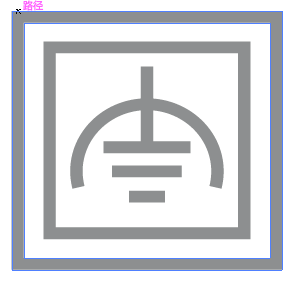 |
Class II equipment with functional earthing |
 |
Alternating current 交流電 |
 |
DC voltage |
 |
Polarity of output terminals 輸出端子極性 |
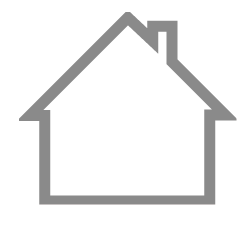 |
Indoor use only 僅限室內使用 |
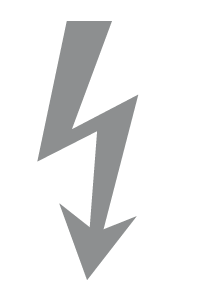 |
Dangerous voltage 危險電壓 |
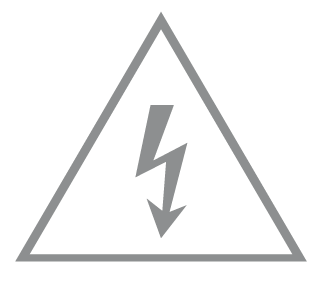 |
Caution, risk of electric shock 注意,有觸電危險 |
 |
Energy efficiency Marking 能源效率標示 |
 |
Protective earth 保護接地 |
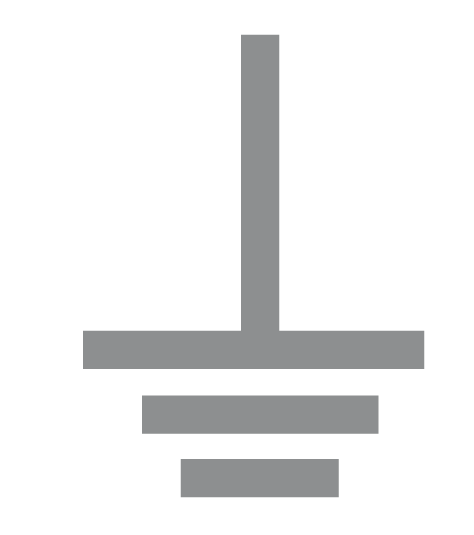 |
Earth 接地 |
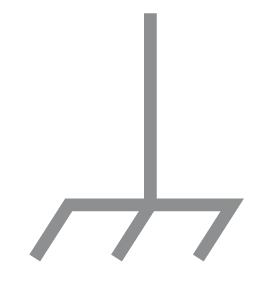 |
Frame or chassis 機架接地 |
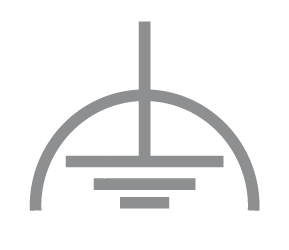 |
Functional earthing 功能接地 |
 |
Caution, hot surface 警告,表面高溫 |
 |
Caution 警告 |
 |
Operator’s manual 操作手冊 |
 |
Stand-by 待機 |
 |
“ON”/”OFF” (push-push) 「開」/「關」 ( 按壓式) |
 |
Fuse 保險絲 |
 |
Fuse is used in neutral N 保險絲用於中性線N |
 |
RECYCLING This means that this product must be handled pursuant to European directive 2012/19/EU in order to be recycled or dismantled to minimize its impact on the environment. |
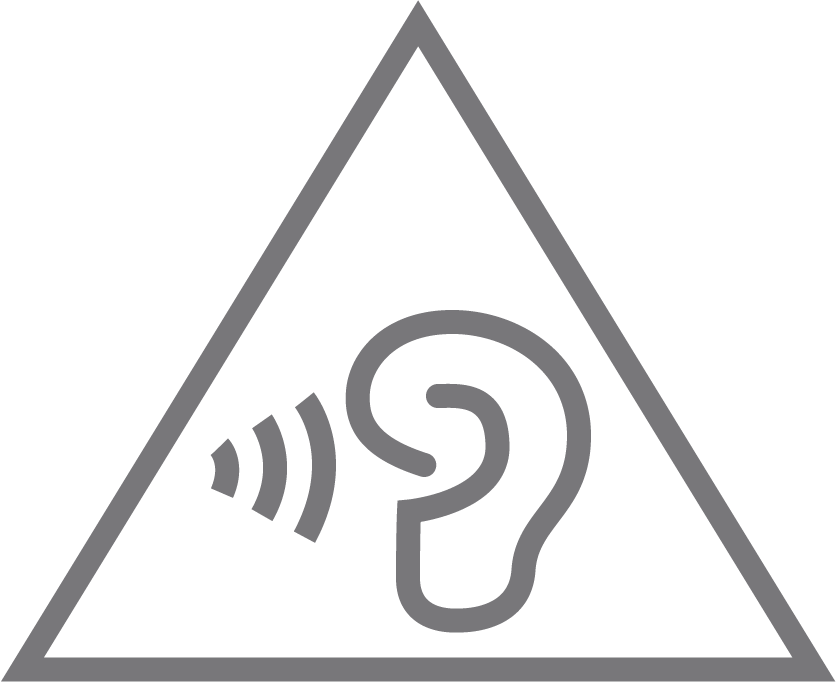 |
Caution, avoid listening at high volume levels for long periods 注意,避免長時間以高音量收聽 |
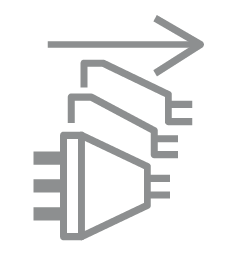 |
Disconnection, all power plugs 斷開所有電源插頭 |
| m | Switch of mini-gap construction 微間隙結構的開關 |
| µ | Switch of micro-gap construction (for US version) Switch of micro-gap / micro-disconnection construction (for other versions except US) 微小間隙結構開關(適用於美國版) 微小間隙 / 微小斷開結構開關(適用於美國以外的其他版本) |
| ε | Switch without contact gap (Semiconductor switching device) 無接點間隙開關(半導體開關裝置) |